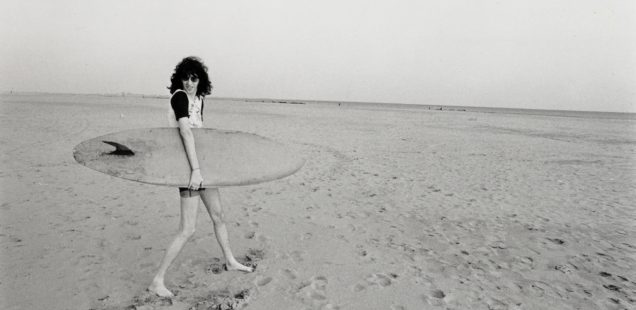
Amy Rigby Dreams, Then Sings of Dancing With Joey Ramone
After four years in Nashville, Amy Rigby needed a new guitar. The strings were constantly breaking on the Guild guitar that she had been using for 10 years. She scoured the city, strumming, it seemed, every guitar in every music store in town before settling on a Gibson J-45.
With her new guitar, and ensconced in the Country Music Capital of the World, did Rigby write a “he done me wrong song” with a train’s lonesome whistle and an empty whisky bottle in the lyrics?
Nope.
Did she write a song about honky tonks, gossipin’ neighbors, and the good folks who go to church every Sunday?
That, too, would be a no.
That first night after buying the guitar, she went to sleep and dreamed the song “Dancing With Joey Ramone.”
“I connect the two things, the song and that guitar,” Rigby said.
“Literally I just dreamt the whole song and wrote it all down. The only part of the song that I actually worked on was the bridge.”
The song is a love letter to Joey and all things Ramones, as well as a paean to New York City, where Rigby came of age after immersing herself in the city’s underground art and music scenes, and the place where she found her calling as a musician.
“It’s very specific to this person, this time, this place in my life. But I think what was so nice, and I love that about any song, where you make it so much about you that it’s about everybody even if the details aren’t exactly the same,” Rigby said. “It just feels like it’s about being a fan of somebody, and moved by somebody, and in this case it’s somebody whose name is synonymous with a whole time and place and ethos, and that happens to be Joey Ramone.”
He walked into the party looking just like he had in the past
He came up to me and he didn’t even have to ask
I tried to say something he said “Girl shut your mouth”
They’re playing Papa Was A Rolling Stone
Last night I was dancing with Joey Ramone
Rigby grew up in the suburbs of Pittsburgh, listening obsessively to pop music on AM radio in the ‘60s and classic rock on FM stations in the ‘70s. She left her hometown before her senior year of high school to study fashion illustration at the Parsons School of Design in New York.
Before leaving, she had a hint of the music that was to become her passion.
“I had an older brother and he got Creem magazine so I saw a little bit of stuff in Creem that was going on. ‘Oh, there’s a group called the Ramones, there’s Patti Smith, there’s Iggy Pop.’ I didn’t know what any of these people sounded like. It was not possible. They didn’t have records out so you couldn’t really know,” she said. “I was going to New York to go to art school but I did hope that I would get to go to CBGBs.
“The last big rock show I went to was Peter Frampton at Madison Square Garden in October ’76. It was what I would have done if I were still in Pittsburgh.”
Rigby was a typically broke college student, but that didn’t stop her from regularly heading out to CBGBs to hear bands never to be heard from again and the ones that form the pantheon of New York’s punk and new wave scene. Blondie. Television. Patti Smith. Suicide. Richard Hell & the Voidoids. She also saw a who’s who of British bands including X-Ray Spex, the Jam, Madness, Bauhaus, and Wire.
And the Ramones, of course, countless times.
He was cool in his leather jacket and his little dark shades
He started dancing around, I tried to copy every move he made
When I reached for his hand he kind of brushed me off
Then they played Hanging On The Telephone
Last night when I was dancing with Joey Ramone
Rigby was right there in the beating heart of the city’s punk and new wave scenes.
“I just loved the energy of the Ramones, I liked their looks. I loved in Punk magazine the little cartoon and picture strips of Joey at Coney Island with the surfboard under his arm. I liked their image. I liked their songs, the real sweet melodies but driving music.”
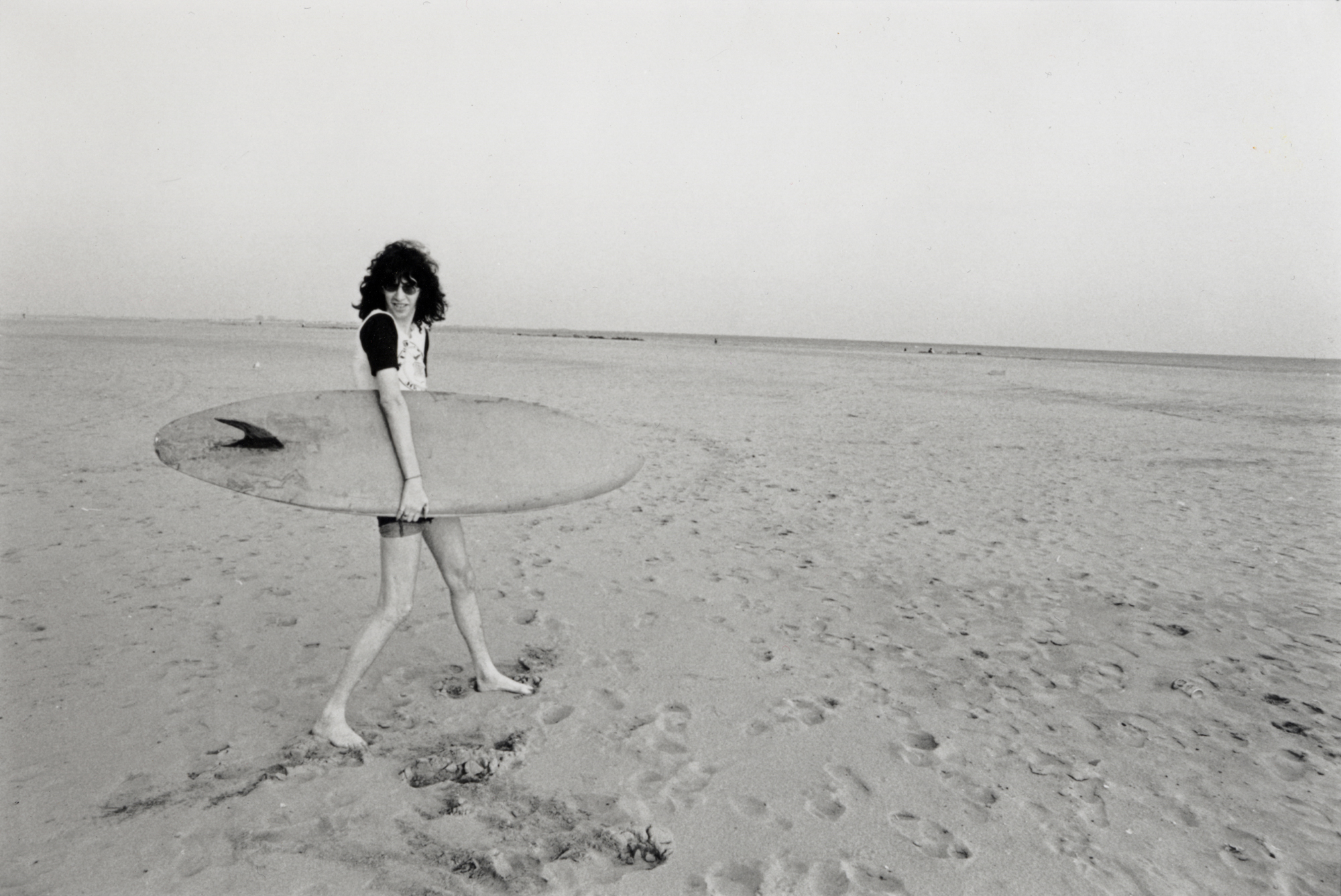
Photo used by permission of Roberta Bayley
Rigby tried playing guitar but “it seemed too hard, my fingers couldn’t hold down the strings and it didn’t seem like something I was going to be able to do.” And as DIY as punk was, the bands “still kind of seemed to know what they were doing in a way that didn’t seem possible if you’ve never really done it before.”

Amy Rigby. Photo by Julia Gorton
With a brother who followed her to Parsons and some friends, they started a floating dance club, Stinky’s, that found a home at Tier 3, a failing downtown lunch spot. The club booked bands like Lydia Lunch’s 8 Eyed Spy, the Lounge Lizards, James Chance, the Slits, the dBs and, crucially, The Raincoats.
“The Raincoats were really the first band that I saw that I was like, ‘I could really do this. I don’t know how, but they play music like I wish I could. This sounds like what I would do if I would get the nerve to do this.’ They were very powerful. They are making this up and doing this as only they can,” Rigby said. “It didn’t sound like male musicians rocking out. Which I love.”
Rigby went to England for graduate school, where she lived in a squat passed on to her by Gina Birch of The Raincoats, who had been given the place by Viv Albertine of the Slits.
When the school year ended, Rigby beelined it back to New York. “I missed being in New York. John Lennon was shot and the Clash came and played at Bonds, this week of shows, I felt like I missed these two important events. New York felt like where I really belonged.”
Rigby worked in the garment district, painting garments on an assembly line, “a step above working in a sweat shop. Basically, any job I ever had was a means to an end, to make something. It was going to be art and then it became music.”
She rented a room from Jerry Teel, who went on to form the band The Honeymoon Killers, and who had a Southern aesthetic new to Rigby.
“He had all these old country records and I was attracted to the covers at first. Pictures of Loretta Lynn and Skeeter Davis, these women with massive, big hair-dos and cool-looking homespun clothes, but with guitars. The covers attracted me, and I started listening to the records, and the songs really attracted me.
“Aside from The Raincoats, I never thought about writing songs until I heard country music. Just the simplicity and the everydayness of the lyrics spoke to me. They were like short stories, the type of short stories I like to read.”
“Hip hop was going on all around us, too. It wasn’t something I could contribute to. That was someone else’s culture,” Rigby said. “The whole country thing was accessible.
“I felt like I could write songs that were three chords and just had a real-life aspect to them. I wasn’t looking to copy the themes of country music. It was more about just day-to-day life in the ‘80s in New York City if you were living on the margins.”
She, her brother, and friends began writing and playing songs. Rigby’s first band, the Last Roundup, emerged from those sessions. It was in the Last Roundup that Rigby learned to write songs, play guitar, and perform in public. That is, she became a musician.
“I didn’t have the inspiration for art that I had for music. Songs popped into my head everywhere. I filled cassette after cassette. I never ran out of ideas,” Rigby said.
The Last Roundup had a five-year run with multiple personnel changes, recorded one album in Nashville that was never released, and another, Twister!, released on Rounder in 1987.
Rigby’s next band was the Shams. She had her only encounter with Joey Ramone, a brief hello kind of thing, when one day he was at the rehearsal studio in Brooklyn where the Shams practiced.
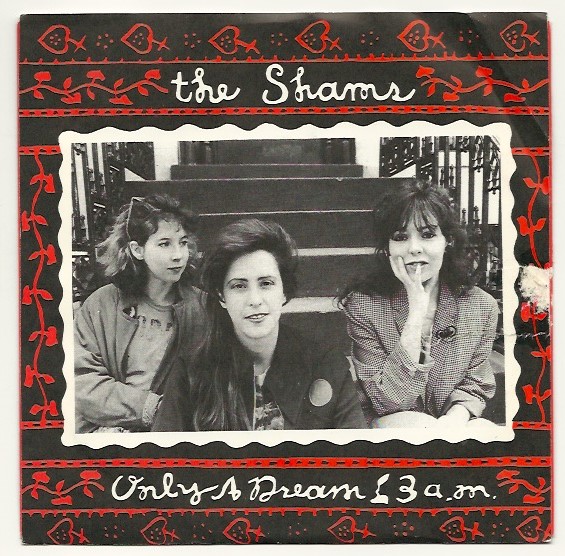
It was during her time in The Shams, Rigby had her baby, Hazel. And that changed everything for Rigby.
“I wanted the work I was doing to add up to something and that’s why I had to start making my own records. If you’re trying to have a family and raise a child, it couldn’t just be this indulgence. I had to amount to something or it just wasn’t worth the sacrifice of the time that I had to spend not at home and also not making the type of living that you would need to make in in New York City to feel like you could take care of a kid.”
Her first solo album, Diary of a Mod Housewife, was the artistic achievement she was striving for. In the Village Voice, Robert Christgau called it “concept album of the year,” and Spin voted Rigby 1996 Songwriter of the Year.
It was her 2005 solo album, Little Fugitive, her fifth, that had Dancing With Joey Ramone.
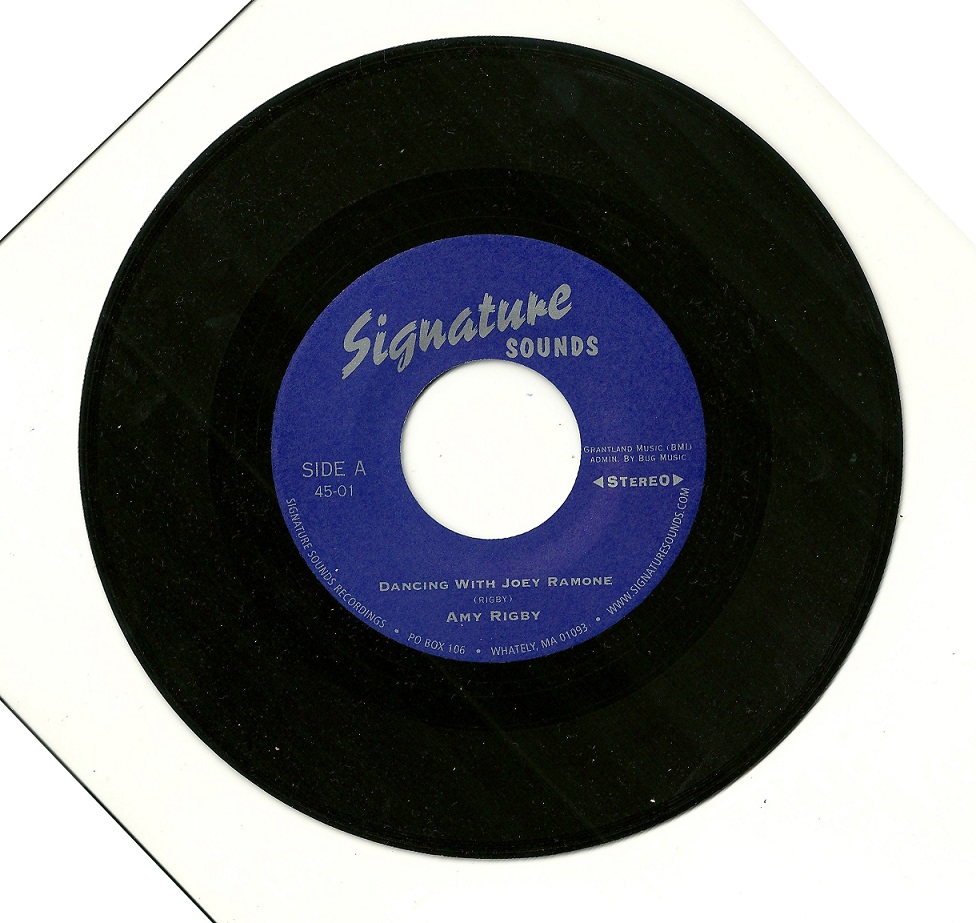
At the beginning of the song, when Joey Ramone tells Rigby to shut her mouth when the band was playing “Papa Was A Rolling Stone” it’s because music is serious business. He was saying she should be listening and paying attention. And when she reached for his hand, it was the same thing. This was no time for romance, which is why he brushes her off.
“He’s almost like a saint, he’s like a spiritual leader in the song. It’s not like a romantic kind of thing. More of, I’m going to show you the way kind of thing. That’s what it feels like,” Rigby said.
The bridge consists of songs she imagined the Ramones would have heard growing up, a couple of songs that she made up because they felt right and fit, and a few that are as much about Rigby as they are the Ramones.
They played The Worst That Could Happen by the Brooklyn Bridge
On WCBS FM she would hear “The Worst That Could Happen” at least once a day. And in December of 1976, during her freshman year of college, Rigby saw Patti Smith guitarist Lenny Kaye play a solo show at the Manhattan Ocean Club. “He played that song and it just blew my mind. It seemed like this schlocky doo wop song. And he made me see how cool it was and then after that I would wait for that song to come on.”
Kaye became a fan, friend, and supporter of Rigby’s and produced the Shams’ album. Rigby is certain that Joey Ramone heard the song on the station as he was growing up.
He Hit Me And It Felt Like A Kiss
Glad All Over, Needles and Pins
“’Needles and Pins,’” which the Ramones covered on their Road to Ruin album, has “a certain feeling that I love about certain Ramones songs, that happy and sad feeling. It kind of has maybe a minor chord in there, but the general feeling of the song is up tempo and positive and it’s always got this tinge of sadness and I love that about ‘Needles and Pins.’”
Be My Baby again and again
Ronnie Spector recorded Rigby’s song, “All I Want,” on her The Last of the Rock Stars album. And Joey Ramone co-produced Spector’s EP, She Talks to Rainbows. “Be My Baby” was an easy addition to the song’s playlist.
Gloria by the Shadows of Knight
He’s So Fine and I Feel Alright
Charlie Brown, Can’t Sit Down
“I love the humor in the Coasters’ songs, I love the pictures they paint. They’re kind of like a cartoon of real life, and I was sure that must have been stuff that the Ramones liked growing up.”
We were dancing around and around
Well I closed my eyes for a minute and then he was gone
“I woke up and that’s always a little sad when I sing that part because it was really one of those great dreams, where while it’s going on you really feel like it’s real, and when I woke up I was kind of like ‘oh, he really is gone. He’s definitely not here anymore.’ It felt sad.
“He’s gone but you still think about him and feel it, just like someone’s presence, especially a performer. You can listen to his records and watch clips of him and remember.”
The room looked different but the music kept playing on and on and on and on
When I woke up today I had a song in my head
I wanna wanna wanna go home
Like the song titled “I Feel Alright” in Dancing With Joey Ramone, “I wanna wanna wanna go home” is a made-up song that just fit. And Rigby wanted ‘I wanna wanna wanna go home’ “to sound like a Ramones song, but also I’m singing this to get back to the place where I belonged.
“Being in Nashville helped me confirm my identity as a New York artist. It was New York that shaped me, and the scene and the stuff I saw there that made me a musician. And the great thing about living in Nashville was that I realized what my role was in a way I never could have had I stayed in New York.”
They played it last night when I was dancing with Joey Ramone
Last night I was dancing with Joey Ramone
Last night I was dancing with Joey Ramone
The rocking song concludes with a “one, two, three, four” Ramones tribute count-off by Rigby and a guitar mashup. It’s the culmination of a song brought to life by a new guitar, a dream, and a love of New York and the city’s hometown heroes, Tommy, Dee Dee, Johnny, and Joey.
-30-
The Little Fugitive album with Dancing With Joey Ramone can be purchased at this Bandcamp site.
Visit Amy Rigby’s website to purchase Diary of a Mod Housewife, as well as other albums, and to stay up to date on her activities, including the upcoming release of her next album, The Old Guys, on February 23.
Amy Rigby’s #1 album, Who’s Next, The Who
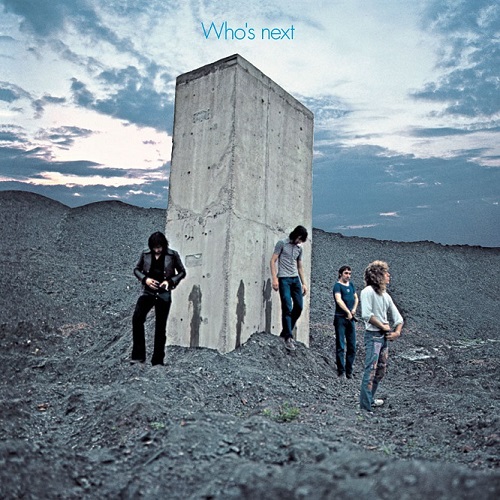
Amy Rigby’s father kept the stereo in his home office so playing albums meant either negotiating with him or waiting until he wasn’t there. And because one speaker was in the office and one was in the living room, when her dad was out of the office or could tolerate some rock and roll, Amy would scurry “back and forth between the two rooms because it felt like you couldn’t get the full picture.”
In 1971, when Amy was 12, her older brother John brought home The Who’s Who’s Next and Amy soaked up the album. She loved “Behind Blue Eyes,” but if she had to pick a favorite song on the disc it would be “Won’t Get Fooled Again.”
In between dashing back-and-forth between the speakers, Amy did what everyone did during the classic rock album era. She’d lie on her back and stare at the cover.
“Oh my God! Is that their piss? That just seemed so shocking to me,” she remembers thinking. “Maybe more than the music it was that picture on the cover and this male world.
“I memorized every Elton John cover so I could have named one of those, but I like the band effort. I guess I probably could have picked Goodbye Yellow Brick Road but I probably heard that one too many times.”
So, for now, Amy will stick with Who’s Next. “I could probably keep listening to it forever and feeling great.”